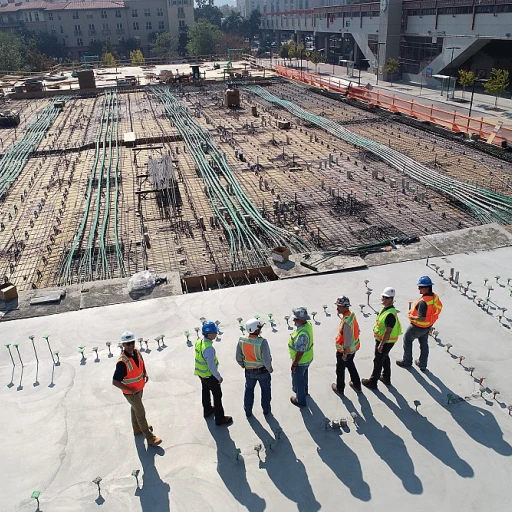
Defining Intrinsic Rewards in the Workplace
The Essence of Intrinsic Rewards
Understanding intrinsic rewards in the workplace can influence various aspects of employee satisfaction and motivation. Unlike extrinsic rewards such as bonuses and promotions, intrinsic rewards are intangible forms of recognition and satisfaction that individuals derive from completing their tasks and achieving personal goals. This type of reward system is pivotal in fostering a sense of purpose and accomplishment among employees. Intrinsic rewards are often centered around internal motivation factors that drive employees to perform their jobs effectively. These rewards can stem from the personal growth experienced through tackling challenging projects, the sense of fulfillment that comes from mastering a new skill, or simply the joy of contributing positively to the team's success. For many, the work environment can greatly influence the levels of intrinsic motivation experienced. A supportive atmosphere where employees feel recognized for their contributions fosters long-term satisfaction. Recognition and a sense of personal achievement often lead employees to feel more connected to their roles and committed to the company's success. While extrinsic incentives like raises and bonuses play a role in motivation, understanding and leveraging the power of intrinsic rewards can significantly enhance employee engagement and retention. For more creative ways to boost employee retention, considering awards like the Dundie Awards can be an innovative approach. The personal sense of accomplishment that intrinsic rewards bring can sometimes have a stronger and more lasting impact than any external incentive. As we continue to delve into the topic, it's vital to recognize how intrinsic rewards, when applied thoughtfully, can contribute to a thriving and committed workforce.Examples of Intrinsic Rewards
Illustrative Instances of Intrinsic Rewards
Intrinsic rewards are pivotal in shaping the work environment and boosting employee satisfaction. They foster a sense of purpose and encourage personal growth by tapping into internal motivation. Unlike extrinsic rewards such as bonuses or promotions, intrinsic rewards focus on the internal satisfaction individuals derive from their work. To help you understand the practical application of intrinsic rewards, consider the following examples:- Sense of Accomplishment: Employees feel intrinsically rewarded when they complete a challenging project or contribute to a successful team outcome. The internal reward system correlates to the personal satisfaction and sense of achievement experienced.
- Opportunities for Personal Growth: Providing employees with tasks that stretch their skills fosters a sense of accomplishment. When they engage in activities that challenge and develop their abilities, their intrinsic motivation and job satisfaction increase.
- Recognition and Appreciation: Daily verbal recognition from team leaders can trigger intrinsic motivation by reinforcing a sense of personal and professional worth. Unlike external incentives, these acknowledgments promote long-term engagement.
- Autonomy and Ownership: Granting employees more autonomy over their work can enhance their intrinsic rewards. When individuals have control over their tasks, they derive motivation not from external triggers but from the internal satisfaction of ownership.
- Sense of Purpose: Aligning an employee’s role with the company’s broader mission can intrinsically reward by providing a deeper understanding of their contribution to the organization’s success.
The Psychological Impact of Intrinsic Rewards
The Role of Intrinsic Rewards in Fostering Motivation
Intrinsic rewards play a vital role in enhancing the psychological well-being of employees, influencing their intrinsic motivation and ultimately their performance. When individuals receive intrinsic rewards, they experience a personal sense of accomplishment and satisfaction that goes beyond external incentives such as raises or bonuses. This innate reward system resonates more with certain employees, fostering a long-term connection between their job and their personal growth.Intrinsic motivation manifests when employees feel internally driven to excel in their roles due to the pleasure they derive from the work itself. Unlike extrinsic rewards, which are primarily focused on tangible outcomes, intrinsic rewards tap into the employees' internal motivation by acknowledging their personal values and contributions to the team. This can significantly enhance their morale and job satisfaction, creating a work environment that encourages innovation and creativity.
The rewards intrinsic to the work itself provide a strong sense of purpose and accomplishment, contributing to overall employee engagement. When employees feel recognized and valued intrinsically, their connection to the company strengthens, incentivizing them to invest more in their roles and contribute positively to the company’s goals. This psychological impact is crucial for fostering a culture of intrinsic motivation that can sustain high levels of performance and retain talent effectively within any organization.
Considering the significant effects of intrinsic rewards, companies are increasingly focusing on creating bespoke reward systems that prioritize intrinsic over extrinsic factors. Understanding this psychological impact can aid in developing reward strategies that not only meet the employees' professional aspirations but also align with their personal values and long-term career objectives. For further insights into how an employee’s experience manager can enhance retention through such personalized strategies, consider visiting our detailed guide on boosting retention.
Intrinsic Rewards and Employee Retention
The Correlation Between Intrinsic Rewards and Employee Longevity
Intrinsic rewards in the workplace play a vital role in fostering employee retention. These rewards, which include a sense of purpose, personal growth, and internal motivation, are key factors that contribute to overall job satisfaction. When employees experience intrinsic motivation, they are more likely to remain committed to their roles and the broader objectives of the company. Organizations often focus on external incentives such as raises, bonuses, and promotions to boost employee engagement. However, integrating intrinsic reward systems can create a work environment where employees feel valued beyond measurable metrics. This approach leads to a deeper connection with their job and a heightened sense of accomplishment. A company that prioritizes intrinsic rewards cultivates a culture where individuals naturally feel motivated. By recognizing employees' efforts through intrinsic means, they feel acknowledged not just as workers but as integral components of the team, leading to increased personal and professional fulfillment. This sense of personal satisfaction is a long-term investment in employee retention, reducing turnover and encouraging sustained performance. When employees find intrinsic rewards in their daily tasks, a greater balance between intrinsic and extrinsic motivations can be achieved. This balance provides a robust foundation for enhanced employee retention, ultimately benefiting both the individual and the organization. As such, a strategic focus on internal motivation and the intrinsic aspects of work can drive employee loyalty and create a resilient workforce.Strategies for Implementing Intrinsic Rewards
Practical Steps to Introduce Intrinsic Rewards in the Workplace
Implementing intrinsic rewards effectively within a company requires careful planning and consideration. It goes beyond just acknowledging hard work by addressing employees' internal motivations and personal growth. Here are some strategies to help introduce and maintain an intrinsically rewarding environment:- Foster a Work Environment that Encourages Team Collaboration: Create opportunities for individuals to feel part of a team working towards a common goal. When employees work collaboratively, the sense of satisfaction and personal accomplishment becomes a natural part of their job.
- Cultivate a Sense of Purpose: Employees are more motivated when they understand how their work contributes to the company's success. Communicate clearly how each role is vital to the overall mission of the organization.
- Offer Opportunities for Personal Growth and Development: Provide ongoing training and encourage skill development. By supporting personal growth, employees feel more invested in their work as they gain confidence and a sense of achievement.
- Implement Reward Systems that Balance Intrinsic and Extrinsic Rewards: While intrinsic rewards relate more to internal motivation and job satisfaction, it's essential to balance them with external incentives like raises, bonuses, or promotions. A well-rounded reward system can enhance motivation and performance.
- Encourage Feedback and Recognition: Regular recognition of contributions from employees can boost their intrinsic motivation. Recognition should not only focus on the end-result but also on the dedication and effort put into the work.
- Enhance Job Satisfaction by Assigning Meaningful Tasks: Ensure that tasks are aligned with employees' interests and capabilities. Individuals are more likely to be intrinsically motivated when they feel that their job roles are valuable and challenging.
Challenges and Considerations
Addressing Potential Hurdles and Key Considerations
Navigating the intricacies of incorporating intrinsic rewards in your organization involves certain challenges that, if overlooked, could undermine the effectiveness of your reward systems. Recognizing these challenges is crucial for fostering a work environment that emphasizes intrinsic motivation and leads to long-term job satisfaction. Here, we explore common pitfalls and important considerations for successfully implementing intrinsic motivation in your company.- Balancing Intrinsic and Extrinsic Rewards: While intrinsic rewards such as personal growth and a sense of accomplishment can enhance motivation and satisfaction, they need to be thoughtfully balanced with extrinsic rewards, like bonuses and promotions. The best reward systems blend both to cater to the diverse needs of employees and teams.
- Understanding Individual Differences: Employees vary significantly in what they find intrinsically rewarding. What motivates one individual or team might differ for another. To effectively implement intrinsic rewards, customize approaches according to the personal motivations and job satisfaction levels of your staff.
- Maintaining Consistent Recognition: As mentioned in the section on intrinsic rewards, consistency in recognizing employees’ contributions is essential. A lack of consistent recognition can diminish the motivational impact and undermine the goal of sustained employee engagement.
- Establishing a Sense of Purpose: Encourage employees to align their personal goals with the company’s mission. This sense of purpose fosters internal motivation, helping individuals feel a personal connection to their work and the organization.
- Monitoring and Measuring Effectiveness: Regularly assess the impact of intrinsic rewards on employee performance and satisfaction. Utilize feedback mechanisms to understand how rewards influence motivation. This helps refine and improve your strategies over time.












